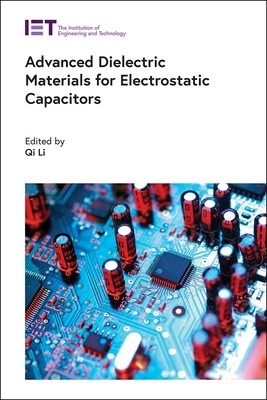
- We will send in 10–14 business days.
- Publisher: Institution of Engineering & Technology
- ISBN-10: 1785619888
- ISBN-13: 9781785619885
- Format: 16.3 x 23.9 x 2.5 cm, hardcover
- Language: English
- SAVE -10% with code: EXTRA
Advanced Dielectric Materials for Electrostatic Capacitors (e-book) (used book) | bookbook.eu
Reviews
Description
Capacitors are passive electrical components that store energy in an electric field. Applications include electric power conditioning, signal processing, motor starting, and energy storage. The maximum charge a capacitor can hold largely depends on the dielectric material inside. That material is the enabler for the performance. Ongoing development in fields such as high-power electronics, renewable energy, hybrid electric vehicles and electric aircraft, is posing an urgent need for more advanced electrostatic capacitor technology.
This book for researchers in industry and academia provides an overview of key dielectric materials for capacitor technology. It covers preparation and characterization of state-of-the art dielectric materials including ceramics, polymers and polymer nanocomposites, for the most popular applications including energy storage, microwave communication and multi-layer ceramic capacitors.
The book begins with an introduction to electrostatic capacitor technology, then goes on to cover the following topics: techniques for capacitor dielectrics characterization; dielectric polymers and dielectric metamaterials for high energy capacitors; polymer/nanofiller composites; high-temperature polymer-based dielectrics for electrostatic energy storage; design and simulations of capacitor dielectrics by phase-field computations; rational design on polymer dielectrics; inorganic dielectrics for high-energy-density capacitors; ceramic dielectrics for microwave communication; ceramic dielectrics for MLCCs; and finally two chapters on future prospects for polymers and ceramics.
EXTRA 10 % discount with code: EXTRA
The promotion ends in 19d.16:15:00
The discount code is valid when purchasing from 10 €. Discounts do not stack.
- Publisher: Institution of Engineering & Technology
- ISBN-10: 1785619888
- ISBN-13: 9781785619885
- Format: 16.3 x 23.9 x 2.5 cm, hardcover
- Language: English English
Capacitors are passive electrical components that store energy in an electric field. Applications include electric power conditioning, signal processing, motor starting, and energy storage. The maximum charge a capacitor can hold largely depends on the dielectric material inside. That material is the enabler for the performance. Ongoing development in fields such as high-power electronics, renewable energy, hybrid electric vehicles and electric aircraft, is posing an urgent need for more advanced electrostatic capacitor technology.
This book for researchers in industry and academia provides an overview of key dielectric materials for capacitor technology. It covers preparation and characterization of state-of-the art dielectric materials including ceramics, polymers and polymer nanocomposites, for the most popular applications including energy storage, microwave communication and multi-layer ceramic capacitors.
The book begins with an introduction to electrostatic capacitor technology, then goes on to cover the following topics: techniques for capacitor dielectrics characterization; dielectric polymers and dielectric metamaterials for high energy capacitors; polymer/nanofiller composites; high-temperature polymer-based dielectrics for electrostatic energy storage; design and simulations of capacitor dielectrics by phase-field computations; rational design on polymer dielectrics; inorganic dielectrics for high-energy-density capacitors; ceramic dielectrics for microwave communication; ceramic dielectrics for MLCCs; and finally two chapters on future prospects for polymers and ceramics.


Reviews